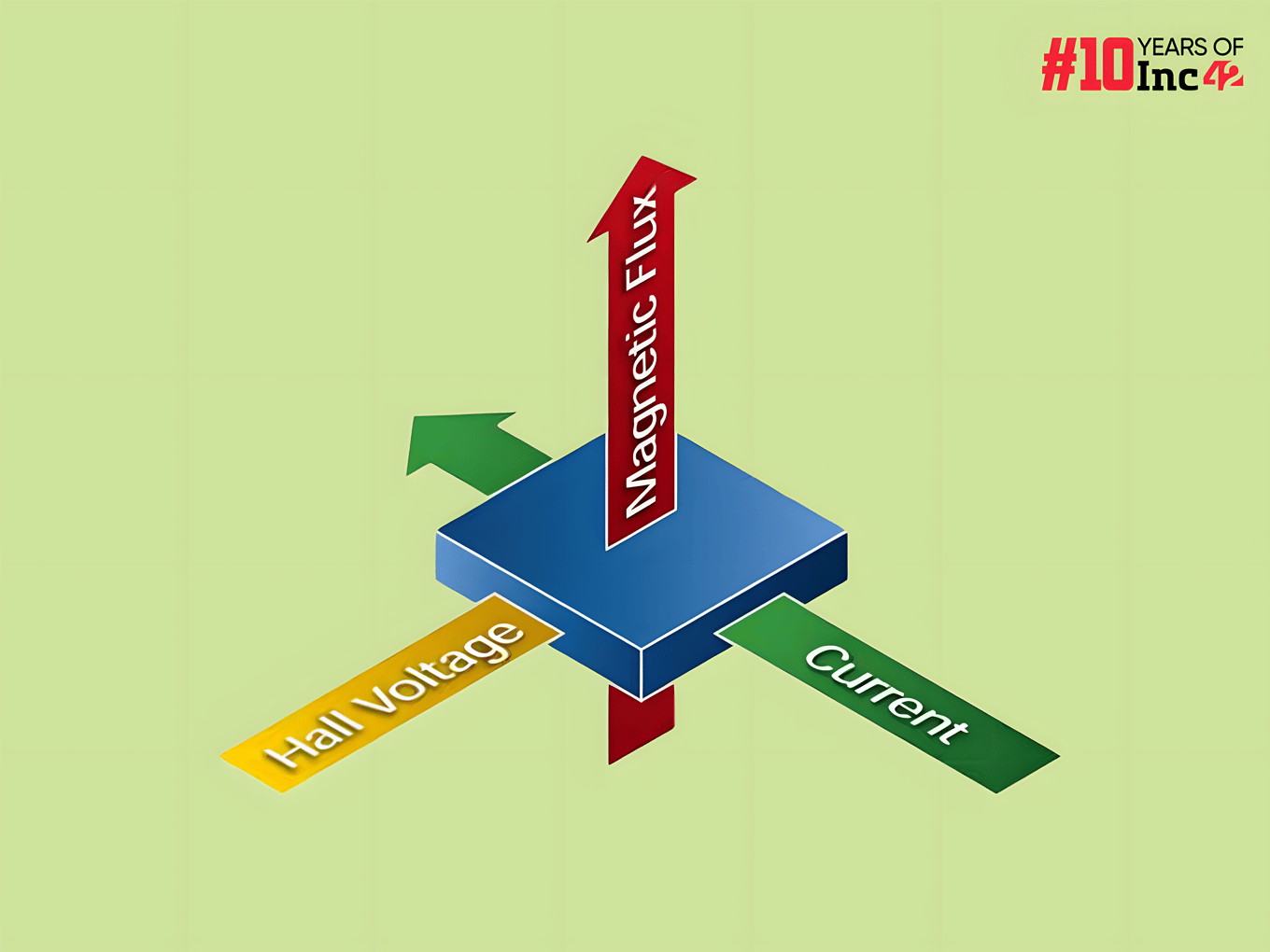What Is The Hall Effect?
Discovered by Edwin Hall in 1879, the Hall effect is a phenomenon when voltage (potential difference) is generated across a current-carrying conductor when it is placed in a magnetic field perpendicular to the existing current.
Imagine a thin sheet of metal with a current running through it. If this metal is placed in a magnetic field perpendicular, a voltage will be created across its width.
The Hall effect works because the magnetic field exerts a force on the moving charged particles (current carriers) within the conductor, pushing them to one side of the conductor. This builds up charge on the sides of the conductor, which creates a voltage across it. Interestingly, the Hall effect can also be used to measure the type and density of charge carriers in a material.
How Does The Hall Effect Work?
The Hall effect relies on a moving charged particle, like an electron in a current, experiencing a force when placed in a magnetic field. Here is a breakdown of the steps involved:
- Current Flow: Imagine a thin, flat piece of conductor with an electric current flowing from one end to another. These moving charges are typically electrons.
- Magnetic Field Introduction: A magnetic field is applied perpendicular to the direction of the current flow through the conductor. This means the magnetic field goes into the material from the top or bottom, not along its length.
- Lorentz Force: Due to the magnetic field, the moving electrons experience a sideways force called the Lorentz force. This force pushes the electrons towards one side of the conductor.
- Charge Buildup: As the charged particles get pushed to one side, they accumulate there, creating an excess of charge on that side. The opposite side of the conductor becomes deficient in charge carriers. This creates a voltage difference, like a mini battery, across the width of the conductor (from the positive side with less charge to the negative side with excess charge). This voltage is called the Hall voltage.
- Hall Sensor Applications: Hall voltage can be measured to detect the presence and sometimes even the strength of the magnetic field. This is the principle behind Hall effect sensors, which are used in various applications like:
- Magnetic Position Sensing: In joysticks, Hall effect sensors detect the movement of a magnet by measuring the change in Hall voltage due to the magnet’s position.
- Speed Measurement: Hall effect sensors are used in devices like rotary encoders to measure the speed of rotation. A rotating disc with teeth passing near the sensor creates a fluctuating magnetic field, which the sensor translates into rotational speed.
- Current Measurement: By measuring the Hall voltage generated in a known current-carrying conductor within the sensor, the current flowing through it can be determined.
How Does The Hall Effect Apply To Semiconductors?
The Hall effect applies to semiconductors in a very similar way to conductors but with some interesting twists due to their unique properties.
- Current Carriers: In semiconductors, unlike conductors that rely solely on electrons, current can be conducted by both electrons and “holes” (the absence of an electron). The Hall effect can reveal the type of majority carrier (electrons or holes) and their concentration.
- Force & Deflection: When a magnetic field is applied perpendicular to the current flow in a semiconductor, the Lorentz force still acts on the moving charge carriers (electrons or holes). This force pushes them to one side of the semiconductor, just like in conductors.
- Hall Voltage & Characterisation: The buildup of charge on one side and depletion on the other creates a Hall voltage. However, in semiconductors, analysing this voltage is more interesting:
- Sign Of Hall Voltage: The sign (positive or negative) of the Hall voltage tells you the majority carrier type. Electrons will generate a negative Hall voltage, while holes will produce a positive one.
- Hall Coefficient: By measuring the Hall voltage, current, magnetic field strength, and sample thickness, we can calculate a property called the Hall coefficient. This coefficient reflects the type and density of the majority of charge carriers in the semiconductor. This information is crucial for characterising and classifying semiconductor materials.
Here are some key applications of the Hall effect in semiconductors:
- Doping Identification: The Hall effect helps determine whether a semiconductor is n-type (majority carriers are electrons) or p-type (majority carriers are holes), a crucial distinction in semiconductor devices.
- Carrier Concentration Measurement: By analysing the Hall voltage and using the Hall coefficient, we can estimate the concentration of charge carriers in a semiconductor, which is important for device performance.
- Material Characterisation: The Hall effect is a valuable tool for researchers and engineers to understand the electrical properties of new or modified semiconductor materials.








